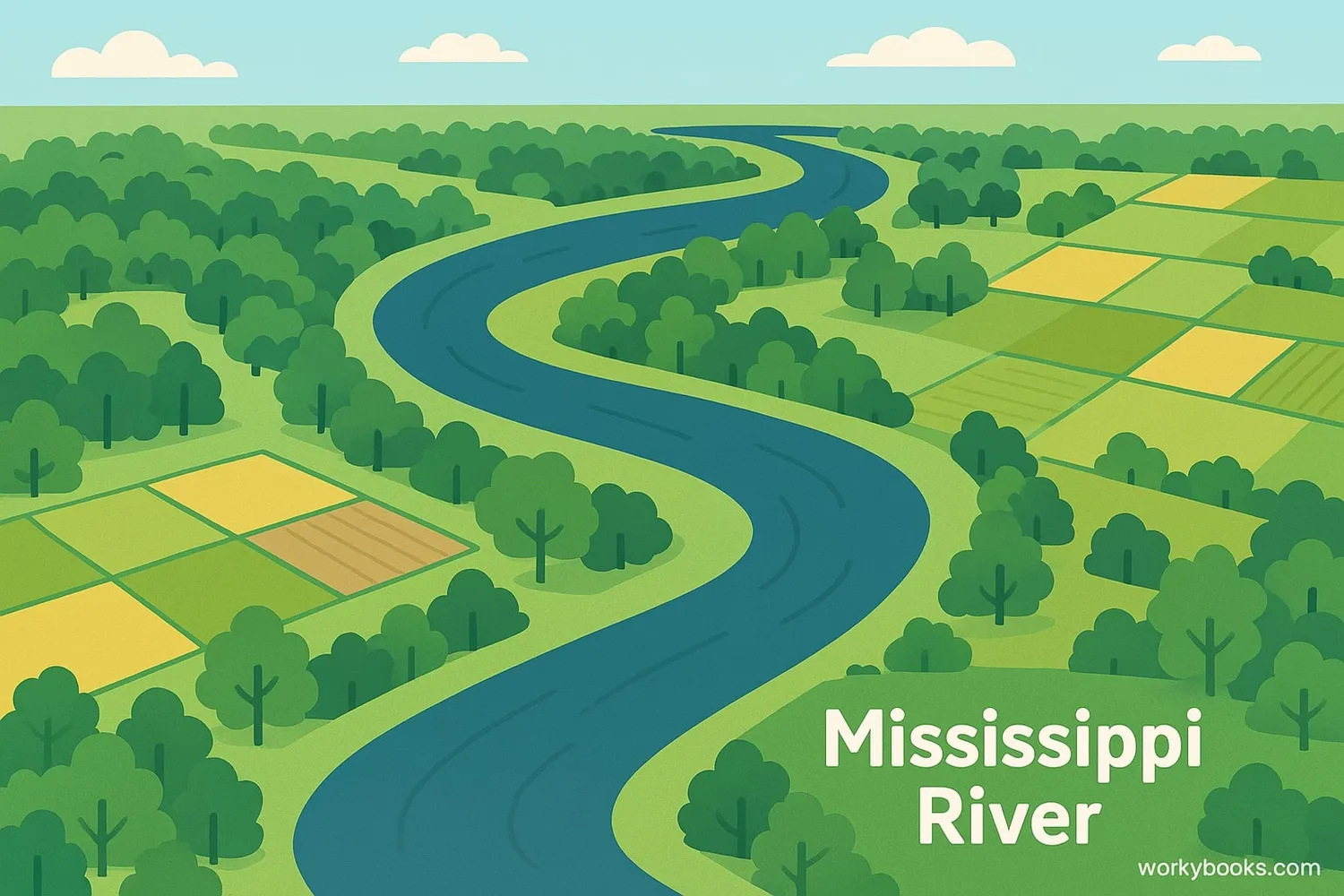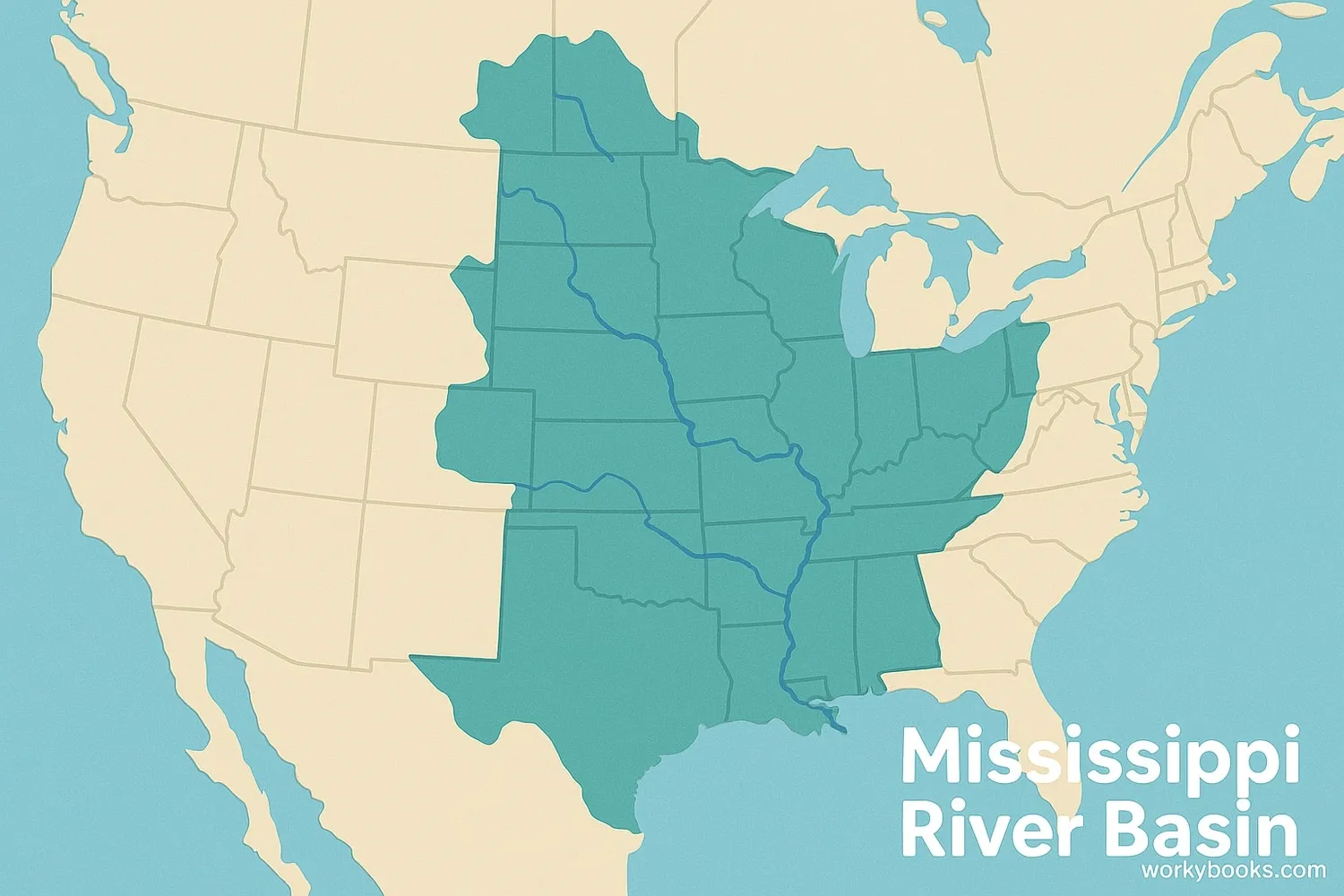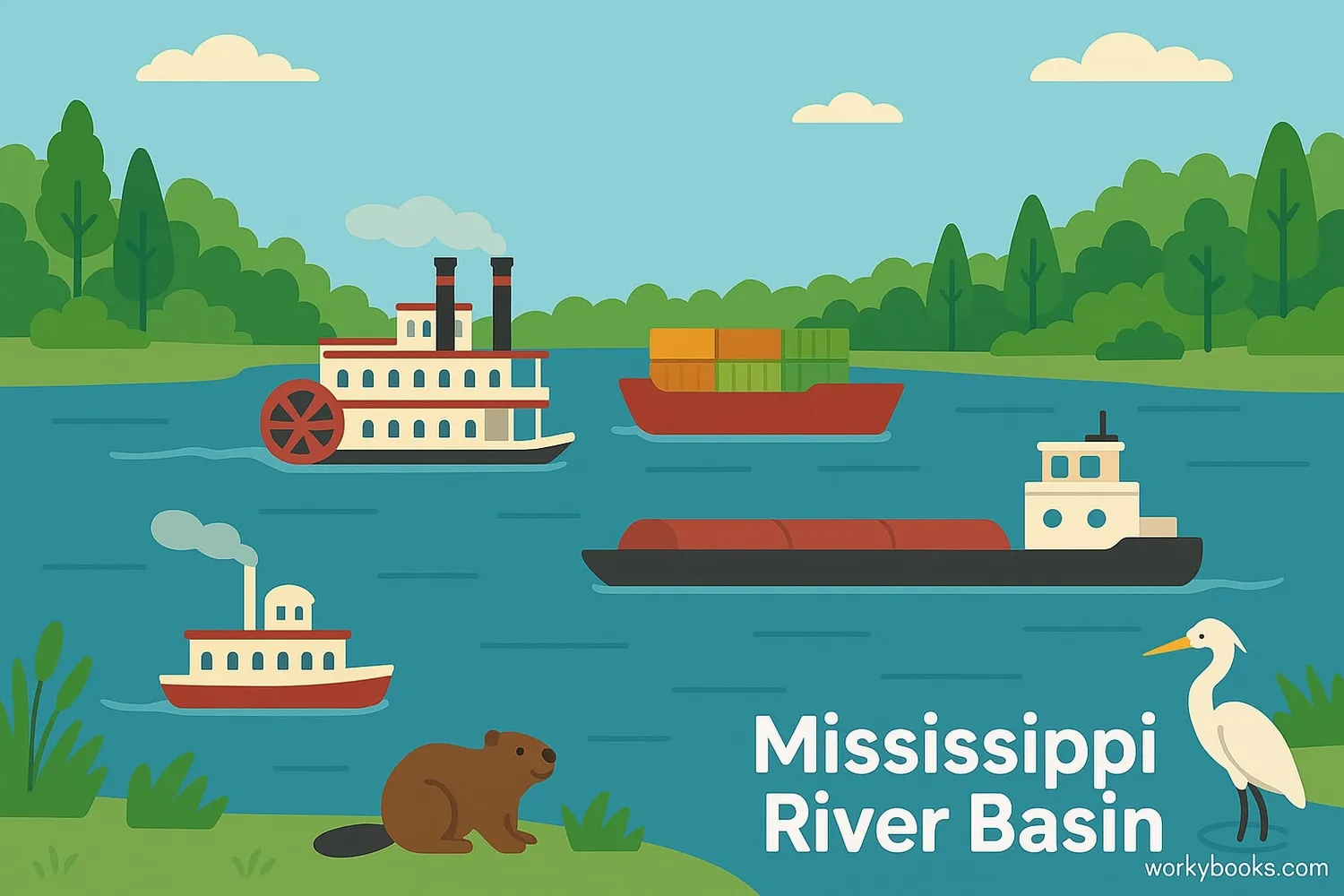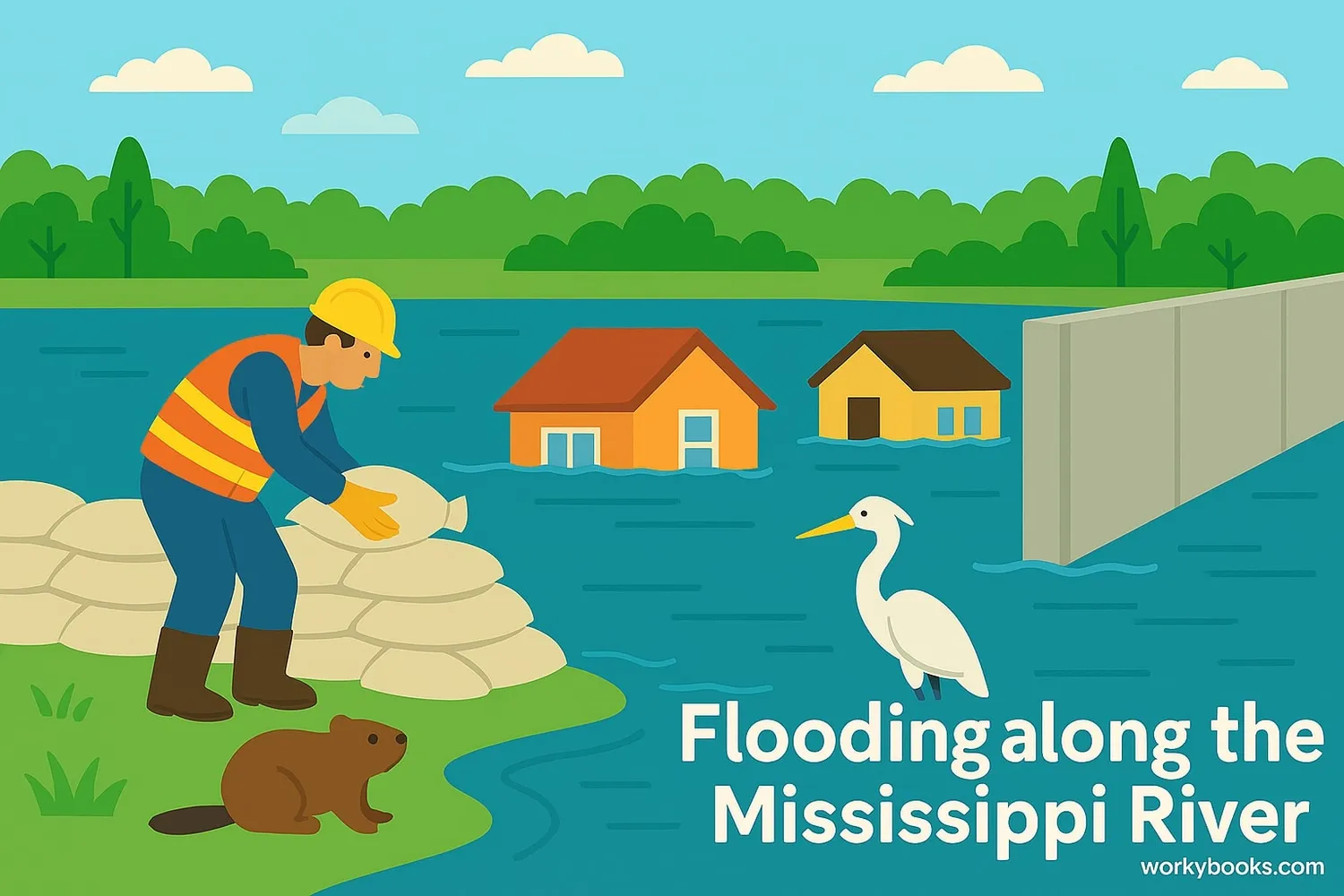Mississippi River - Definition, Examples, Quiz, FAQ, Trivia
Discover America's greatest river system and its importance to our nation
What is the Mississippi River?

The Mississippi River is one of the world's great rivers and the longest river in North America. Stretching approximately 2,340 miles (3,766 km), it flows from its source at Lake Itasca in Minnesota all the way to the Gulf of Mexico. The name "Mississippi" comes from the Ojibwe word "misi-ziibi," meaning "Great River."
Key Facts:
- Length: 2,340 miles (3,766 km)
- Source: Lake Itasca, Minnesota
- Mouth: Gulf of Mexico, Louisiana
- Width: 20-30 feet at source to over 11 miles at widest point
- Flow Rate: 600,000 cubic feet per second at New Orleans
The Mississippi River flows through or borders 10 states: Minnesota, Wisconsin, Iowa, Illinois, Missouri, Kentucky, Tennessee, Arkansas, Mississippi, and Louisiana. Its watershed drains all or parts of 31 U.S. states and 2 Canadian provinces, covering about 40% of the continental United States.
Geography of the Mississippi

The Mississippi River system is made up of the Mississippi River itself and its many tributaries. The most important tributaries include:
Missouri River
Longest tributary, adds sediment that makes the river appear brown
Ohio River
Carries the largest volume of water to the Mississippi
Arkansas River
Major tributary flowing from the Rocky Mountains
River System Facts:
The Mississippi River and its tributaries form the third-largest watershed in the world! Only the Amazon and Congo river basins are larger.
The river can be divided into three main sections:
Upper Mississippi - From Lake Itasca to the confluence with the Missouri River near St. Louis. This section has many lakes, marshes, and forests.
Middle Mississippi - A relatively short section from St. Louis to the Ohio River confluence. This section flows through bluffs and floodplains.
Lower Mississippi - From the Ohio River confluence to the Gulf of Mexico. This section has the largest volume and flows through the broad floodplain of the Mississippi Delta.
Importance of the Mississippi

The Mississippi River has been vital to America's development and continues to play crucial roles today:
Major Cities
Minneapolis, St. Louis, Memphis, Baton Rouge, New Orleans
Navigation
Transports 60% of U.S. grain exports to world markets
Wildlife Habitat
Home to 260 fish species and 40% of North America's waterfowl
Historical Significance:
- Native American tribes have lived along the river for thousands of years
- Explored by Europeans in the 16th and 17th centuries
- Played a crucial role in the Louisiana Purchase and westward expansion
- Important transportation route during the Civil War
- Inspired American literature and music (Mark Twain, blues music)
Today, the river remains vital for transportation, agriculture, industry, drinking water, and recreation. The Mississippi River Basin produces 92% of U.S. agricultural exports and 78% of the world's feed grains and soybeans.
River Challenges

The Mississippi River faces significant environmental challenges that require careful management:
Flooding
Natural flooding patterns altered by human development
Pollution
Agricultural runoff creates "dead zone" in Gulf of Mexico
Habitat Loss
Wetland drainage reduces wildlife habitats
Dead Zone Fact:
Each summer, nutrient pollution from the Mississippi creates a "dead zone" in the Gulf of Mexico larger than the state of Connecticut, where oxygen levels are too low to support most marine life.
Engineers have built an extensive system of levees, dams, and spillways to control flooding. While these structures protect cities and farmland, they also prevent natural flood cycles that replenish wetlands and create habitats for fish and wildlife.
Mississippi River Quiz
Test your knowledge about the Mississippi River with this quiz!
Frequently Asked Questions
Here are answers to common questions about the Mississippi River:
Mississippi River Trivia
Discover fascinating facts about America's greatest river:
Changing Length
The Mississippi River's length changes over time! In 1993, measurements showed it was 2,320 miles long. By 2005, new measurements showed it had grown to 2,340 miles due to natural changes in its course.
Busy Waterway
The Mississippi River system carries over 500 million tons of freight each year, including 60% of America's grain exports. A single barge can carry as much cargo as 70 semi-trucks!
Wildlife Wonder
The Mississippi River basin is home to 360 species of fish, 326 species of birds, and 145 species of amphibians and reptiles. It provides critical habitat for 40% of North America's waterfowl during migration.
Ancient River
The Mississippi River is geologically ancient! Its current course began forming about 70 million years ago, making it much older than many other major rivers. The lower Mississippi has followed roughly the same path for about 50 million years.


